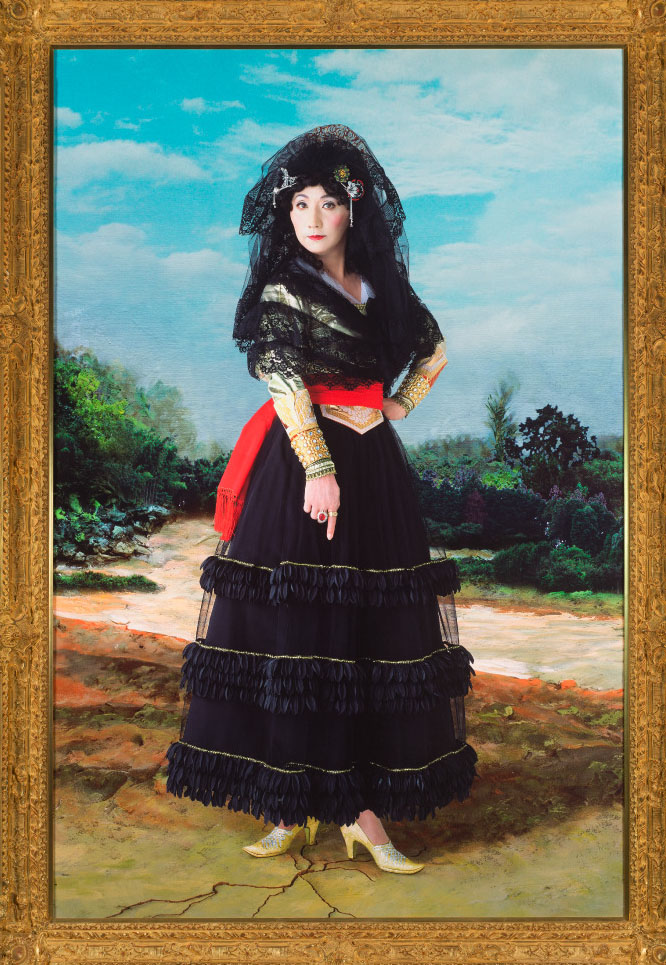At a time when the lack of equity and diversity in institutions across the nation has increasingly come into the spotlight, museums have especially found themselves under the pressure to change. One institution anticipating the changing demographics of their audience and finally bringing critical conversations about gender binaries and identity politics to the forefront of the art world is the McNay Art Museum in Texas. From June 20, the San Antonio museum will present Transamerica/n: Gender, Identity, Appearance Today, the first broad survey of contemporary artwork from across North America exploring the construction of identity through gender and appearance.
Timed to the 50th anniversary of the 1969 Stonewall Riots, the exhibition will trace the ways in which artists, from the 70s to today, have fashioned images of themselves through a variety of mediums. Presented alongside “Andy Warhol: Portraits,” the show incorporates photographs by Robert Mapplethorpe and Catherine Opie, figurative sculptures by Greer Lankton and Frank Benson, and installations by Xavier Schipani and Jacolby Satterwhite.

“This exhibition is about love,” Richard Aste, McNay Director, said in a statement. “It is about honoring the authentic identities of artists by adding their dignified portrayals to our walls.”
Once repositories of culture and beauty far removed from politics, museums, perhaps never more so than today, are increasingly under fire for lack of representation, inclusion, and diversity. In New York, protests at the Solomon R. Guggenheim Museum, the Metropolitan Museum of Art, and the Whitney Museum of American Art have set a strong precedent for institutions holding their philanthropic families and board of trustees to a higher scrutiny, and the Museum of Modern Art’s plans to reinstall its permanent collection to reflect a diversified canon reflects a higher concern with the previously understated question of who is represented in museum collections and by whom.
“Art museums can bridge their communities, and ‘Transamerica/n’ will help the McNay do that better,” Aste said. San Antonio is, after all, 64 percent Hispanic, and, through a series of initiatives like making the museum completely bilingual and diversifying the staff, the McNay has made significant progress in becoming more inclusive. In 2017, the museum held a series of exhibitions exploring migration, borders, and cross-cultural identities, among them an experimental documentary on the controversial possibility of a wall along the US-Mexico border and a show of prints by the Mexican American women artists of the 80s and 90s often excluded from narratives of the Chicano labor movement. The McNay also held its first exhibition of masterworks solely by African American artists to commemorate Black History Month in 2017.
But the exhibition continues to be a controversial show, especially for South Texas, for which the museum prepared with a series of speaking engagements in the lead-up to the opening and a bilingual glossary to help viewers navigate the myriad of terms associated with non-binary gender identities.

“This exhibition is a teaching moment,” said the show’s curator, René Paul Barilleaux, of how Transamerica/n reflects previously underrepresented identities at the McNay. Works by Latinx artists and artists from the San Antonio community are prominent in the exhibition, like a self-portrait of Mari Hernández, “Los Hermanos” (2019), of the artist clad in the garb of Mexican soldiers, and an altar by David Zamora Casas flipping the traditional symbology of the Day of the Dead (Día de los Muertos) to celebrate the living symbols of queer culture in San Antonio.
“Everyone should be able to see themselves, their cultures, their identities, and their passions reflected in our collections and exhibitions,” Barilleaux said.
“Transamerica/n: Gender, Identity, and Appearance Today” runs from June 20 to September 15 at the McNay Art Museum in San Antonio, Texas.
